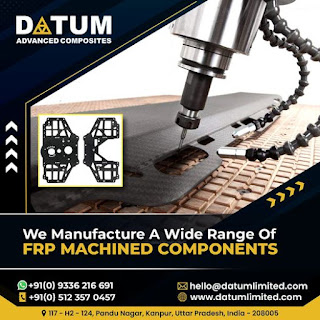What is the Importance of Computer Aided Designing in 3D Composite Modeling?
Gone are the days when engineers used the drafting method and assembly drawings by using the traditional ways. The traditional way of drafting composite models is not only time-consuming but also hampers the work of both- designers and engineers while causing inaccuracies in design. The inaccurate designs can result in losing you a lot of fortune as well as time and effort because most organizations realize these flaws during the manufacturing stage. For that reason, the composite industry is turning to a 3D modeling process which helps in reducing design costs by enhancing overall design accuracy.
To facilitate a smooth 3D modeling process, the composite industry uses computer aided designing software. From architecture or aeronautics to mechanical engineering and the healthcare industry, all industries are now experiencing the full potential of 3D modeling and getting the best out of it. It can actually help in numerous ways including rendering, simulation, and manufacturing.
Computer Aided Designing or CAD allows engineers and designers to build realistic computer models and test their compatibility with complex simulations and digital manufacturing. After overall analysis, these 3D designs are further used to produce physical components with 3D printing, model-based definitions, and rendering. In this blog post, we will understand why CAD is gaining so much popularity in the composite industry.
Enhance Design Quality
One of the major importance of CAD in composite modeling is that it enhances the design quality and results in the effective manufacturing of composite materials. The software has a variety of libraries with standard templates of modeling components. These templates are used by designers while preparing the layout or structure of a material which further helps them to meet the product requirements effectively. The CAD helps to ensure the accuracy of the design at the initial level and saves time. The abnormalities and inaccuracies get eliminated at the designing stage resulting in accurate prepreg moulding.
Improves Designer’s Productivity
The CAD software can help designers to visualize all the components of the design effectively at the early stages and allows them to work accordingly. It also helps in determining its mechanical properties and gives the exact idea of the final product which further helps in making instant changes if required. The productivity of the designer gets enhanced because of the reduced number of iterations and reduces the tedious and manual process of designing.
Easy and Quick Documentation
With the help of CAD software, designers make 3D models of composite materials effectively and visualize their work efficiency without any hassle. It also helps them in a simple documentation process with consistent, comprehensive, and clear reports. The documentation further helps in additive manufacturing and makes it a smooth process. It gives a solid foundation to understand the background of the project making everything flexible and creative.
Enhance Design Communication
With a 3D depiction of composite materials, better design communication and understanding are gained during the overall project development. With the help of 3D modeling, it is easier for the other departments to understand the reliability of the design and make the manufacturing process easier.
The necessity of preciseness can’t be neglected in the composite industry. Because of this reason, CAD software is becoming more practical and beneficial in new verticals like composite manufacturing. If you are also looking for innovative composites produced with the latest technology like CAD, you should consider Datum Advanced Composites. We have been providing various composite materials for various complex projects.

Comments
Post a Comment